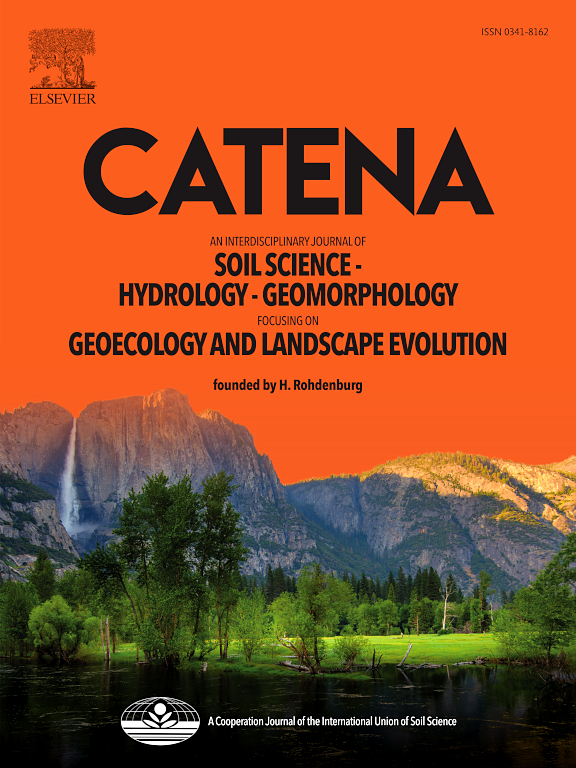Can environmental variables, high sampling density and machine learning deliver detailed maps of soil organic carbon and carbon stock in tropical regions?
IF 5.4
1区 农林科学
Q1 GEOSCIENCES, MULTIDISCIPLINARY
引用次数: 0
Abstract
Studies on the spatial variability of soil organic carbon (SOC) and carbon stocks (CS) at detailed scales are scarce and are mostly conducted in temperate regions, requiring efforts to map SOC and CS with finer resolutions in tropical regions. This work aimed to (1) characterize the spatial distribution of SOC and CS under different land uses; (2) predict SOC and CS using environmental variables and proximal and remote sensing, testing 22 combinations of covariate sets; and (3) map SOC and CS at detailed scale (1 sample per 3.5 ha) and 12.5 m of resolution. 236 soil samples were collected: 180 in a regular grid (200 x 200 m) in two depths (0–20 and 80–100 cm) for model calibration and 56 for validation. Samples underwent SOC and texture analyses, and were scanned by proximal sensors (portable X-ray fluorescence – pXRF, and magnetic susceptibility – MS). Terrain attributes (TA) were calculated from a digital elevation model (12.5 m) and the normalized difference vegetation index (NDVI) and insolation indices were obtained from Sentinel-2 and Landsat 8 imagery. The Random Forest (RF) algorithm was used for modeling. The highest SOC contents were found in an Organossolo (Histosol) under pasture followed by soils under native forest and pasture. High variation of SOC and CS was found even within the same land use, soil class and parent material. The best prediction achieved an R2 = 0.47 (SOC at 0–20 cm). Subsurface (80–100 cm) predictions were less accurate. Soil texture, remotely sensed data (NDVI, TA and radiation) and parent material were the most important predictors. High sample density along with environmental variables provided satisfactory accuracy (R2 = 0.47). However, since high SOC and CS spatial variation was found, future works are encouraged to obtain more accurate SOC and CS maps at high resolution, e.g., adopting other variables to enhance the results.
求助全文
约1分钟内获得全文
求助全文
来源期刊

Catena
环境科学-地球科学综合
CiteScore
10.50
自引率
9.70%
发文量
816
审稿时长
54 days
期刊介绍:
Catena publishes papers describing original field and laboratory investigations and reviews on geoecology and landscape evolution with emphasis on interdisciplinary aspects of soil science, hydrology and geomorphology. It aims to disseminate new knowledge and foster better understanding of the physical environment, of evolutionary sequences that have resulted in past and current landscapes, and of the natural processes that are likely to determine the fate of our terrestrial environment.
Papers within any one of the above topics are welcome provided they are of sufficiently wide interest and relevance.
 求助内容:
求助内容: 应助结果提醒方式:
应助结果提醒方式:


